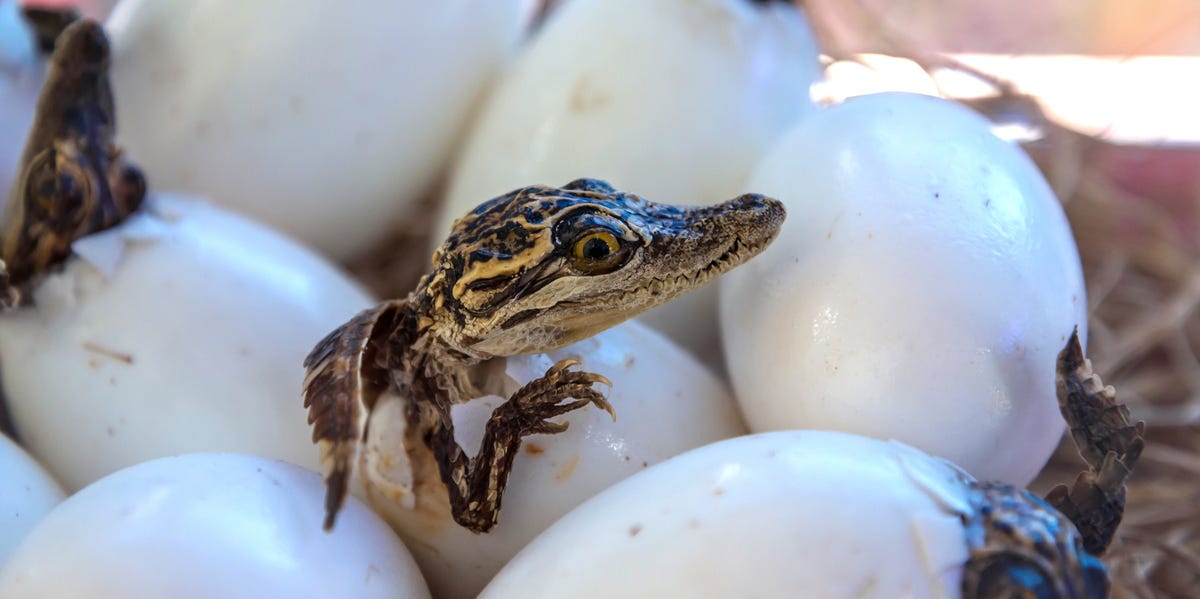
How does virgin birth work in dinosaurs and crocodiles?
On January 17, 2018, a keeper at Parque Reptilandia Zoo in Costa Rica discovered a clutch of eggs in a crocodile enclosure. The fourteen eggs appear to have come from an eighteen-year-old pointed crocodile (Crocodylus acutus), who has been living in the zoo since she was two years old. Nothing special, as you might think. However, this beaked crocodile had been living in isolation for at least sixteen years. So there was no question of the crocodile’s father.
Baby crocodile without a father
It was also confirmed when one of the 14 eggs was found to contain a fully formed fetus: a stillborn daughter who turned out to be 99.9 percent genetically identical to her mother. The lack of paternal alleles proved that the beaked crocodile should not have a mating partner.
In an article published on June 7, 2023 in the Scientific Journal Biology Letters A team of researchers suggests that the baby crocodile is a so-called parthenogen – the product of virgin reproduction. This is special news, because because of the place that crocodiles occupy in the evolutionary timeline, this may mean that some dinosaurs were also able to reproduce in this way.
How does virgin reproduction work?
correct. When a female produces a mature egg, it contains exactly half the amount of genes needed to produce an individual. In sexual reproduction, the male sperm cell provides the other half, but parthenogenesis is different.
As a byproduct of the egg cell, the ovary also produces three smaller polar bodies: a kind of waste container for genetic material. Normally, these polar bodies die on their own, but in vertebrates capable of parthenogenesis, such a polar body can fuse with an egg cell. An egg is then created, which contains all the necessities for the formation of an embryo. Since these offspring are nearly identical to the mother’s, they will always be females—as is the case with the long-beaked crocodile from Costa Rica.
Parthenogenesis in dinosaurs
Parthenogenesis has previously been observed in birds, among others, but this is the first time that it has also been observed in a crocodile. And because crocodiles and birds are both archosaurs, this raises interesting questions about the extinct archosaurs that once roamed our Earth: the dinosaurs.
Therefore, researchers consider it likely that dinosaurs and pterosaurs – Huge flying reptiles such as Quetzalcoatlus, which has a wingspan of 11 meters – She was able to reproduce virginally. Parthenogenesis is rare and may occur when a species has to survive under extremely unfavorable conditions, such as a harsh climate or a lack of potential mating partners.
editor
Merav Brunt is National Geographic’s digital editor and writes regularly for the magazine. During her studies in Social Geography, she learned to place local phenomena in an international context. As a freelance journalist, you look for the small stories behind the big news. She writes for VPRO and the National Holocaust Museum, among others.

“Travel enthusiast. Alcohol lover. Friendly entrepreneur. Coffeeaholic. Award-winning writer.”
